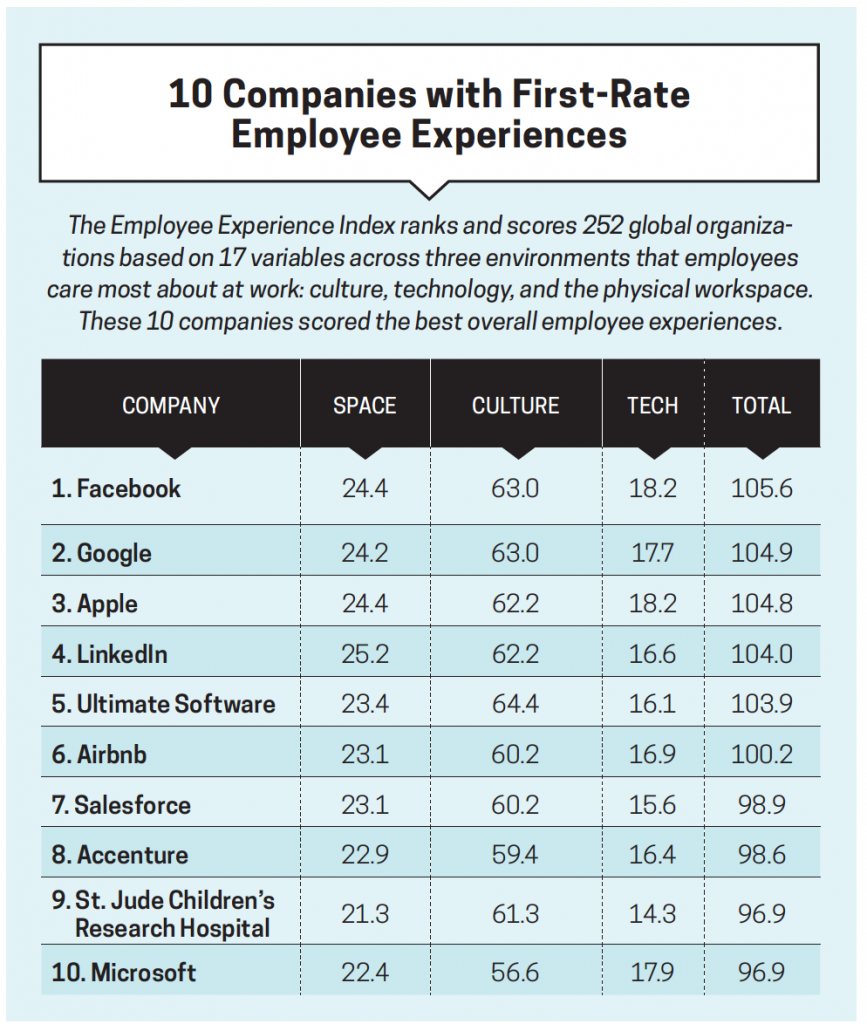The author studied more than 250 companies and discovered that, to create a fulfilling work environment, only three factors matter. Engagement didn’t make the list.
By Jacob Morgan
Nobody starts a new job and, on day one, thinks to themselves, “Man, this place sucks!” Brand-new, bright-eyed hires are eager to start their adventures, meet their coworkers, discover their duties, see their workspaces, and uncover crucial company intel, like the best time of day to hit the coffee machines.
But then you see the results from the annual HR engagement survey and discover that something happened over time to turn your once-enthusiastic employees into jaded desk jockeys. It’s your job to lift spirits, so you pull out all the perks: Maybe it’s the option for employees to work from home on Fridays. Better yet, hot yoga in the break room!
While these kinds of tricks may temporarily boost satisfaction, they’re little more than adrenaline shots. Today’s employees are smart, and they know their organizations only introduce perks to produce harder, better, and faster workers. In the end, dangling three free hours of an open bar doesn’t make your team members any more loyal—just more buzzed.
In 2017, investments in employee engagement have never been higher, yet employee engagement scores have never been lower. We’re spending significant resources to fix a problem that continues to persist, and by the time any meaningful data is collected and analyzed, new team members will have come and gone. But some organizations are starting to see the light: Accenture, for example, has stopped giving annual employee engagement reviews altogether.
So what’s the alternative? Employee experience.
A few years ago, psychologist Thomas Gilovich discovered that people are more satisfied after spending money on experiences, rather than stuff. Some of the world’s leading organizations are trying to take this finding and figure out how to make employees feel like they’re investing in an experience—not completing a transaction.
To get a better sense of what this looks like in the corporate world, I interviewed more than 150 c-suite executives at global organizations ranging from LinkedIn to Xerox. I then went through just as many case studies, research reports, and articles to understand what employees care most about at work.

Finally, with the financial help of Lever and Cico, I hired two data scientists and five researchers to help me analyze more than 250 organizations around the world, including the companies found on Fortune’s 100 Best Places to Work and Glassdoor’s Top Best Places to Work lists.
Though every employee experience is different, I discovered that each is a combination of three distinct environments:
Technology: The central nervous system of the organization, represented by the tools employees use to get their jobs done. Most concepts and themes related to the future of work, such as real-time feedback and workplace flexibility, aren’t possible without technology. This comprises 30 percent of the overall employee experience.
Physical space: This includes everything from the art on office walls to the lounge area where employees unwind. Physical space—which helps connect employees with a sense of belonging and reflects the values of the organization—also makes up 30 percent of employee experience.
Culture: The side effects of working for your organization, like feeling a sense of pride and purpose or learning and growth. One of the most important aspects of culture is having managers that act as coaches and mentors. Corporate culture comprises 40 percent of employee experience.
Of the 252 organizations I analyzed, only 15—including Facebook, Airbnb, and Riot Games—met the criteria for having a first-rate employee experience. These companies don’t necessarily have access to better employees or a magical hiring practice, but they all subscribe to the following five strategies.
Strategy #1: Define a Reason for Being
This is a mission statement that isn’t centered on financial gain; it’s meant to rally employees and examine the impact the organization has on the community. (Think: Airbnb’s “Belong Anywhere.”)
A clear reason for being has a dramatic impact on employee experience because it allows workers to relate to what their organizations stand for.
Strategy #2: Give Power to People Who Care
Employee experience is meaningless without managers who are willing to make the investment. And they won’t make the investment if they don’t care about people. In most organizations, we elevate employees who are good individual contributors and make them responsible for others, offering leadership and soft skills training along the way.
But that’s the wrong approach. Instead, we need to promote people who are already great at communication, collaboration, and empathy. LinkedIn and Adobe scored so highly on my Employee Experience Index because both companies value leaders who aren’t justbetter at soft skills, but are courageous enough to use those skills in front of others.
Strategy #3: Trust the Data
It’s easy to look at massively successful organizations like Google and Facebook and emulate all their practices. “What? They have free food? We have to do that, too!” But these companies don’t make baseless decisions; they have robust data science teams that are constantlycollecting information from employees, and experimenting with ideas.
For example, many organizations have recently abandoned annual performance reviews. But Facebook has doubled down. Why? Because the company has hard stats showing that its employees embrace them. Don’t make decisions based on what you read in a report—even this one. Rely on your own data, from your own people.
Strategy #4: Identify Moments That Matter
Most offices honor only a few standard moments for employees: your first day on the job, your birthday, and maybe your last day. But organizations with elite employee experience scores treat their employees like people with lives outside of work. (Imagine that!)
Recognize the moments that truly matter for your employees—closing on their first houses, becoming first-time parents, and coming up with cool project ideas—and create great experiences around them.
Strategy #5: Operate More Like a Lab
Most companies act like factories, which are linear and process-centric; they focus on the status quo and generally resist change. Laboratories, on the other hand, constantly experiment with new ideas, challenge conventions, and embrace failure.
The leaders I’ve interviewed admit they don’t have the answer for how to build a perfect organization, but they’re also quick to tack on the word “yet.” Even if you don’t have all the answers, keep testing and trying until you do.
Jacob Morgan is a futurist, speaker, and bestselling author of The Employee Experience Advantage. He is also the founder of The Future If, a community devoted to exploring what our future will look like if certain trends, technologies, and ideas come to fruition.


